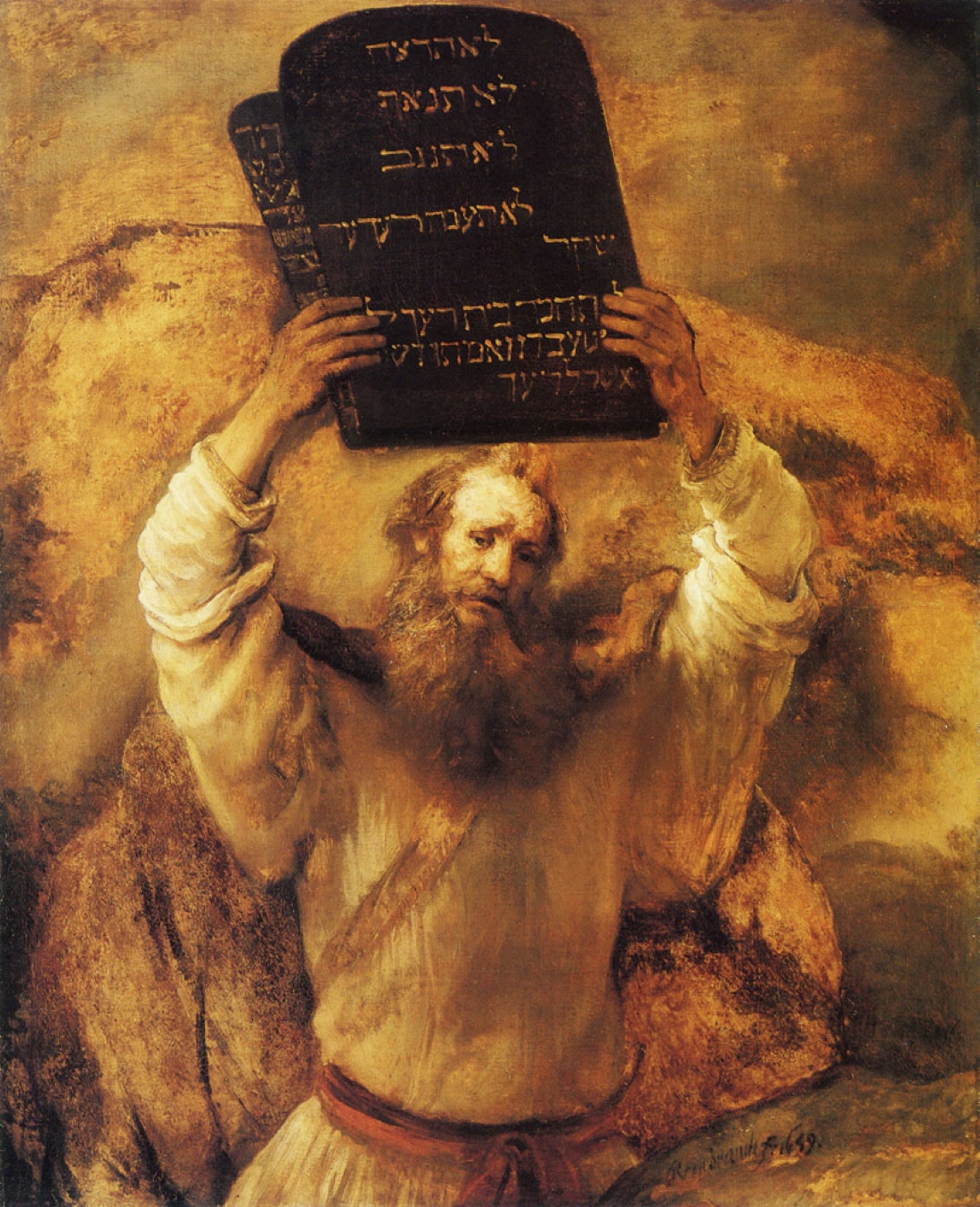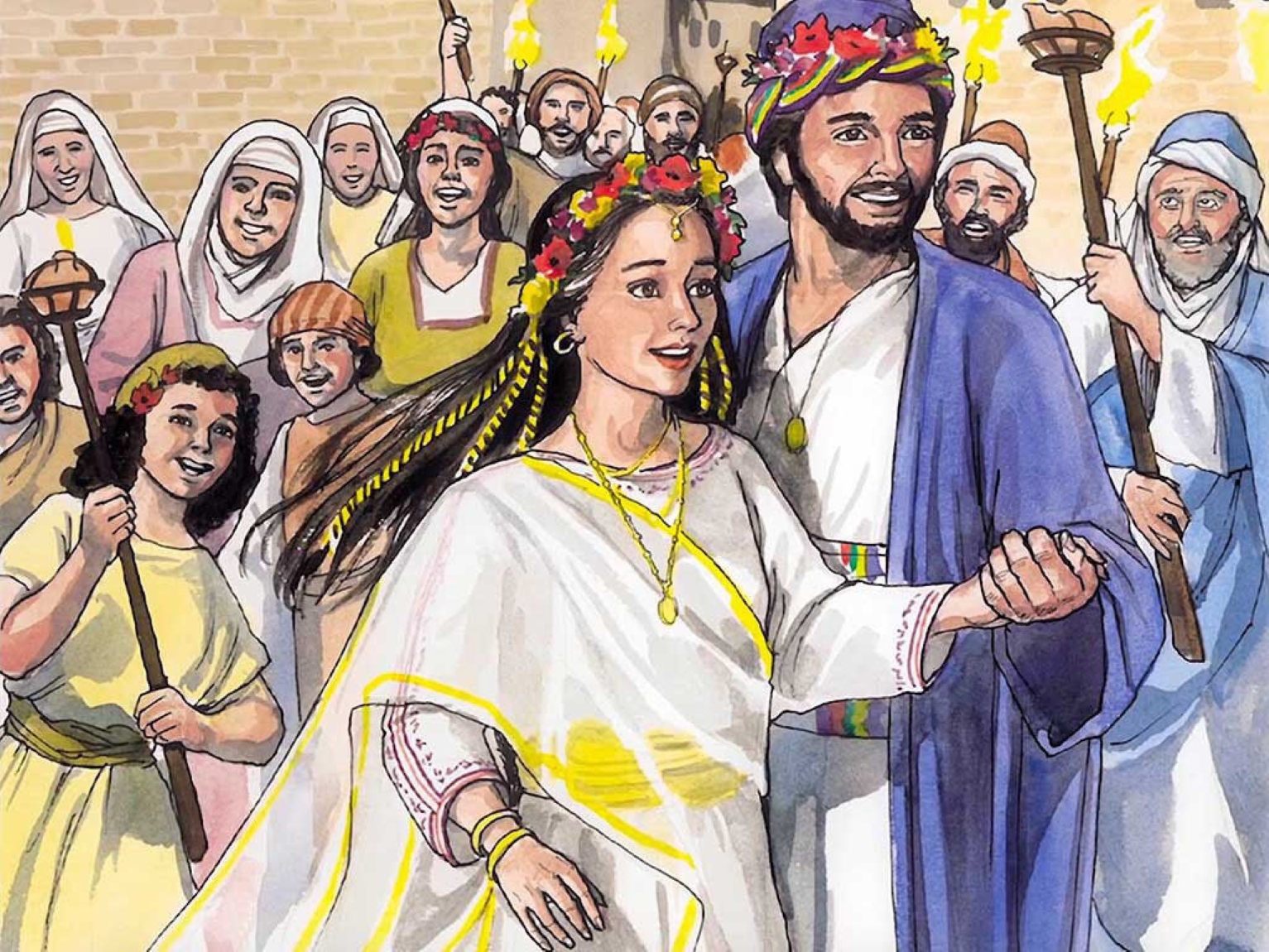This post continues my series on Jesus, divorce, and remarriage (JDR), where I’m currently walking through Matthew 19. To understand my goals in this series, please see my past posts, especially the first two:
Jesus on Divorce and Remarriage: Introduction (JDR-1)
Hyper-Literalism, Could vs. Should, and a Guiding Question (JDR-2)
“Cleave” Does Not Imply an Unbreakable Bond (JDR-3)
“One Flesh” Does Not Imply an Unbreakable Bond (JDR-4)
“God Has Joined Together” Does Not Imply an Unbreakable Bond (JDR-5)
Genesis 2:24 as God’s Creation Norm for Marriage (JDR-6)
“Let Not Man Separate” Implies a Breakable Bond (JDR-7)
“Moses Allowed You to Divorce” Suggests a Breakable Bond (JDR-8)
Why Did “Hardness of Heart” Cause God to Allow Divorce? (JDR-9)
“Hardness of Heart” and Jesus’ Audience, Then and Now (JDR-10)
Summary of this post: Jesus agreed that “Moses allowed you to divorce” but emphasized that “from the beginning it was not so.” Was Jesus hitting reset, overturning everything the law of Moses had said about divorce? In this post I argue from grammar and context that the handful of English translations that read “in the beginning” badly miss the boat, and even the translations (ESV, etc.) that read “from the beginning it was not so” are not as accurate as ones (NASB, etc.) that read “from the beginning it has not been this way.” Jesus was saying that divorce, though it was allowed and sometimes even commanded by God in the law of Moses, has always been in tension with God’s original intent for marriage.
Recap of Divorce in the Law of Moses
In my last several posts I considered Jesus’ words, “Because of your hardness of heart Moses allowed you to divorce your wives.” Many men of Israel—both in Moses’ day and Jesus’—had hearts that were hard toward God and their wives. Because their hearts were hard, they often divorced their wives for frivolous reasons. God, through Moses, gave laws to prevent the worst of such abuse. He recognized the use of official divorce certificates (rather than mere abandonment) and restricted husbands who wished to reclaim wives they had previously divorced. Hardhearted husbands also sometimes failed to provide for wives they no longer loved. In such cases, God commanded them to grant their wives divorces, releasing them to seek homes (and sometimes husbands) elsewhere.
Jesus’ rebuke (“because of your hardness of heart”) turned the moral logic of the Pharisees on its head. The law of Moses did not grant Jewish men justification to divorce their wives for any cause they wished; rather, it condemned them as hardhearted for seeking unjustified divorce rather faithfully loving their wives. The law they cited in their defense actually witnessed against them.
When Was It Not So?
“Moses allowed you to divorce your wives,” Jesus said, “but from the beginning it was not so.” What did Jesus mean by “from the beginning it was not so”? Was Jesus hitting a cosmic reset button, overturning every instruction about divorce given since the beginning? Did Jesus, by this statement, fully revoke all permission for divorce? Do his words indicate a divine timeline, a sequence of separate dispensations of God’s will, each with its own special expectations and rules? In short, when was it not so?
One way to continue is by sharing another bad translation of Jesus’ words. Jesus did not say this: “Because of your hardness of heart Moses allowed you to divorce your wives, but in the beginning it was not so.”
“In the beginning it was not so.” Why is this a poor translation? I’ll suggest four reasons.
(1) “From,” Not “In”
First, Jesus did not say “in the beginning” (ἐν ἀρχῇ) as in John 1:1, but “from the beginning” (ἀπ’ ἀρχῆς). Some translators and authors have missed this. Daniel Kauffman, for example, wrote this:
It was because of the degraded condition of fallen man that Moses permitted man to give a writing of divorcement, but it was not so in the beginning, neither is it under the Gospel.[1]
Quarles, in his handbook on the Greek text of Matthew, explains why this phrase “from the beginning” is significant:
The prepositional phrase ἀπ’ ἀρχῆς is temporal and marks the beginning point of an action that continued for some time thereafter: “from the beginning on.”[2]
This continuing action is evident in another instance when Jesus used the same phrase (ἀπ’ ἀρχῆς), foretelling “great tribulation, such as has not been from the beginning of the world until now” (Matt. 24:21). Similarly, in Matthew 19:8 Jesus wasn’t referring only to the moment of creation. No, he was referring to a state that began at creation and continued from that point on.
How long did it continue? One clue is found in the fact that, in Matthew’s record of Jesus’ divorce debate, Jesus uses this phrase “from the beginning” twice. In the first instance, he asked, “Have you not read that he who created them from the beginning made them male and female…? (Matt. 19:4). Quarles says “the construction [from the beginning] seems to imply that God’s creative work continues through procreation,” as humans conceive and bear children.[3] According to this clue, “from the beginning” probably means from the beginning right up to and including the present.

(2) “Has Been,” Not “Was”
A second reason to reject the translation “in the beginning it was not so” is found in the verb “was.” The Greek word that I translated “was” is γέγονεν. This word is in a tense-form that is called perfect. Please be patient as I dig into some grammatical weeds for a moment.
Decker, in his textbook Reading Koine Greek, suggests that the perfect verb form focuses on a state or condition rather than the past action that caused that condition. Take, for example, the Greek verb λύω (“to loose”). While some forms of this verb should be translated by English past tense expressions such as “he loosed” or “he was loosing,”[4] the perfect form is better conveyed by the present tense phrase “he is loose.” Consider the advice Decker gives to translators:
The equivalent of the perfect in English is a bit difficult, because we have no exact equivalent. The best we can do in most cases is to think in terms of a simple present form in English… If the simple present tense makes good sense in English, then do not conceive of the meaning in terms of the English helping verb have. Some statements, however, make good sense in English only as “I have been x,” but this is a matter of English idiom, not a reflection of the meaning of the Greek statement.[5]
Thus, if we follow Decker’s suggestions, we should first try to translate Jesus’ statement using the present tense: “From the beginning it is not this way.” That sounds awkward in English, however, so our next option should be this: “From the beginning it has not been this way.” This translation accurately clarifies that Jesus’ observation about the beginning remained true right up to his day—right up to the present.
This, in fact, is exactly how the NASB translates Jesus’ words: “From the beginning it has not been this way.” It also reflects how English Bible versions most often translate the perfect verb γέγονεν elsewhere in the NT.[6]
Decker says “the perfect tense-form is almost always significant when it is used.”[7] Other verb forms were available if Jesus had meant to say “was not so” [8] or “had not been so,”[9] as if God’s creation standard had come to an end when Moses allowed divorce. Luck summarizes well the significance of the grammar of Jesus’ statement:
Jesus is not trying to distinguish between a dispensation up to Moses, followed by a hiatus, in turn terminated by Jesus’ present teaching, but rather a continuing divine attitude that runs clear from the beginning of creation up to the point of the Lord’s speech—right through the time of Moses and the exercise of the Law![10]
(3) “From the Beginning” = God’s Timeless Creation Design
A third reason why “in the beginning it was not so” is a potentially misleading translation of Jesus’ words is found in Mark’s parallel record of Jesus’ teaching. Mark, like Matthew, quotes Jesus’ statement about hard hearts. But instead of following this up with a negative statement (“but from the beginning it was not so”), Mark follows with a positive statement that makes the same point, by saying what was so. Compare the two accounts, first Mark’s, then Matthew’s:
They said, “Moses allowed a man to write a certificate of divorce and to send her away.” And Jesus said to them, “Because of your hardness of heart he wrote you this commandment. But from the beginning of creation, ‘God made them male and female.’ ‘Therefore a man shall leave his father and mother and hold fast to his wife, and the two shall become one flesh.’ So they are no longer two but one flesh. What therefore God has joined together, let not man separate.” (Mark 10:4-9)
He answered, “Have you not read that he who created them from the beginning made them male and female, and said, ‘Therefore a man shall leave his father and his mother and hold fast to his wife, and the two shall become one flesh’? So they are no longer two but one flesh. What therefore God has joined together, let not man separate.” They said to him, “Why then did Moses command one to give a certificate of divorce and to send her away?” He said to them, “Because of your hardness of heart Moses allowed you to divorce your wives, but from the beginning it was not so. (Matthew 19:4-8)
A comparison of these two accounts shows that Matthew’s clause “from the beginning it was not so” functions as a flashback. It points us back to what Jesus had just said: God “from the beginning made them male and female” (cf. Gen. 1:27), “therefore a man shall leave his father and his mother and hold fast to his wife, and the two shall become one flesh’ (Gen. 2:24), and finally—in a timeless implication drawn from these two quotes—“What therefore God has joined together, let not man separate.”
“From the beginning it was not so,” then, refers not merely to a specific time in the past when divorce was not permitted, but to God’s unchanging creation design. This design has been the foundation for marriage in all ages. And according to that design, it has never been God’s original will that man would separate what he has joined—not at creation, not during the time of Moses, and not today. (We Bible teachers, in our eagerness to emphasize the newness of Jesus’ teaching, sometimes obscure this point.[11])

(4) God’s Creation Standard Remained Relevant for the Pharisees
A fourth reason why “in the beginning it was not so” poorly reflects Jesus’ thought may be suggested by the first part of Jesus’ statement: “Because of your hardness of heart Moses allowed you to divorce your wives.” Notice that Jesus is accusing the Pharisees in his own time of hardness of heart (“your… you… your”). If a person is hard of heart, this means they are stubbornly resisting something. In this case, at least part of what the Pharisees were resisting was God’s original creation design for marriage.
What does this suggest? If God’s expectations for marriage had been truly and fully lifted during the time of the law of Moses, then Jesus could hardly have accused the Pharisees of being hardhearted in relation to those divine expectations. The fact that he did accuse them of hardheartedness about marriage and divorce suggests that God’s creation intent was a standard that was still, on some level, in effect.
Summary and a Glance Ahead
For these reasons, I think the handful of English translations that read “in the beginning” badly miss the boat, and even the many translations (ESV, etc.) that read “from the beginning it was not so” are not as accurate as ones (NASB, etc.) that read “from the beginning it has not been this way.”[12]
What is “this way” that Jesus said has never been from the beginning? Grammatically, “this way” (οὕτως) points back to the clause before: “Moses allowed you to divorce your wives.”[13] Jesus is saying, then, that the allowance of divorce, even though it was included by God it in the law given through Moses, was always in tension with God’s original intent for the permanence of marriage. Yes, God permitted and even sometimes commanded divorce in the Law of Moses, but every such situation of permitted or commanded divorce involved someone who was acting contrary to God’s original purpose for marriage, a purpose which had never been lifted.
Here, again, is how Luck put it:
Jesus is not trying to distinguish between a dispensation up to Moses, followed by a hiatus, in turn terminated by Jesus’ present teaching, but rather a continuing divine attitude that runs clear from the beginning of creation up to the point of the Lord’s speech—right through the time of Moses and the exercise of the Law![14]
In other words, “from the beginning it has not been so”—divorce never was and still is not part of God’s original intention for marriage.
This understanding of Jesus’ words resolves some questions but leaves others hanging. If you can’t spot the hanging questions yet, wait for my next post, where I plan to ask what Jesus’ words suggest about the relationship between God’s creation standard, the law of Moses, and new covenant believers today. Hopefully, after muddying the waters a little further, I can help us more clearly identify the flow of Jesus’ teaching about divorce.
Meanwhile, feel free to share your observations in the comments below.
If you want to support more writing like this, please leave a gift:
[1] Daniel Kauffman, Bible Doctrine, (Scottsdale, PA: Mennonite Publishing House, 1914), 452. Available online: https://books.google.com/books/about/Bible_Doctrine.html?id=NmkCQ0br9OUC
[2] Charles L. Quarles, Matthew, Exegetical Guide to the Greek New Testament (Nashville, TN: B&H Academic, 2017), 221. I have printed in full several words that Quarles abbreviated.
[3] Quarles, Matthew, 221.
[4] Aorist and imperfect, respectively.
[5] Rodney J. Decker, Reading Koine Greek: An Introduction and Integrated Workbook (Grand Rapids, MI: Baker Academic, 2014), 329-330.
[6] The verb γέγονεν occurs 31 times in the perfect form in the NT. In most occurrences, English Bible versions translate γέγονεν using some sort of present tense verb—usually a present perfect progressive verb phrase like “has been” or, less often, a simple present tense verb like “is.” The NASB, which aims to reflect Greek word forms carefully, uses past tense verbs only twice to translate γέγονεν.
Here is a rough survey of how γέγονεν is translated in three popular English versions: ESV: Past (9x); past perfect progressive (1x); present perfect progressive (12x); present (9x). NIV: Past (9x); past perfect progressive (1x); present perfect progressive (12x); present (5x); not translated (4x). NASB: Past (1x); past perfect progressive (1x); past with pres. perf. prog. footnote (4x); present perfect progressive (24x); present (1x).
[7] Decker, Reading Koine Greek, 330.
[8] Ἐγένετο, the aorist form, found 195 times in NT.
[9] Ἐγεγόνει, the pluperfect form, found 2 times in the NT.
[10] William F. Luck, Divorce and Re-Marriage: Recovering the Biblical View, 2nd ed. (Richardson, TX: Biblical Studies Press, 2008), 157-58. Available online: https://bible.org/series/divorce-and-re-marriage-recovering-biblical-view. Luck, ibid.: “The grammar here is interesting; ‘from the beginning it has not been this way’ (gegonen) does not mean from the beginning until a point in the past (i.e., the giving of the Mosaic ‘concession’). That translation would be clear had the text used the tense called ‘pluperfect.’ But it uses the simple perfect instead, which should be rendered ‘from the beginning all the way up to the point of my speaking these words.’” Webb drew on both this grammatical point and the previous one (from the beginning) to emphasize that “[divorce] was never God’s intention—‘from the beginning’ until now, and from now on” but he unhelpfully insinuates that the OT divorce allowance was Moses’ idea, not God’s. Joseph A. Webb, Till Death Do Us Part? What the Bible Really Says About Marriage and Divorce (Longwood, FL: Webb Ministries, 2003), 67.
[11] Taylor appears to temporarily show confusion on this point. It appears he was alluding to Matt. 19:8 (though I can’t find a translation that includes his word “since”) when he wrote, “Jesus raised the duty and majesty of marriage higher than it had been for a long time—‘since the beginning.’” Later he more correctly expresses Jesus’ meaning when he writes, “Jesus stated to them what the fundamentals of marriage actually are… since the dawning of creation.” Dean Taylor, “One Flesh, One Covenant,” Pt. 1 of “Marriage, Divorce, and Remarriage,” The Heartbeat of The Remnant, April/May/June 2007, Ephrata Ministries, p. 4. Available online, accessed 4/21/2022, http://www.ephrataministries.org/pdf/2007-05-covenant.pdf.
[12] Other translations similar to the NASB include the AMP, ASV, DLNT, WEB, and YLT. See https://www.biblegateway.com/verse/en/Matthew%2019:8.
[13] Quarles: “Οὕτως, ‘like this,’ in which a comp. is made to what precedes (Moses’s permission to divorce due to humanity’s hard-heartedness)” (Matthew, 222).
[14] Luck, Divorce and Re-Marriage, 157-58.”





